This article was medically reviewed by Mark Ziats, MD, PhD. Dr. Mark Ziats is an Internal Medicine Physician, Scientist, Entrepreneur, and the Medical Director of xBiotech. With over five years of experience, he specializes in biotechnology, genomics, and medical devices. He earned a Doctor of Medicine degree from Baylor College of Medicine, a Ph.D. in Genetics from the University of Cambridge, and a BS in Biochemistry and Chemistry from Clemson University. He also completed the INNoVATE Program in Biotechnology Entrepreneurship at The Johns Hopkins University - Carey Business School. Dr. Ziats is board certified by the American Board of Internal Medicine.
This article has been viewed 81,651 times.
A prescription drug is a medication legitimately prescribed by a doctor and meant to treat a specific condition or disease.[1] Prescription drugs are stronger and potentially more dangerous than off-the-shelf medications, so that's why they are restricted and controlled by pharmacies. Once you have the "script" from your doctor, filling it can be done by physically going to a pharmacy or going online and having it sent to your home.
Steps
Getting a Prescription From Your Doctor
-
1Make an appointment with a doctor. If you have a chronic condition (such as diabetes) or are feeling symptoms related to something more acute (coughing, fever, joint pain, vomiting) then see your doctor for a physical. Once your doctor has diagnosed you, she may recommend a prescription medication to combat your symptoms. If so, she will give you a slip of paper (the script) that includes your name, the medicine and the amount (dosage) she wants you to take.
- Your doctor should ask if you're taking any other medications or dietary supplements (vitamins, minerals, herbs) in order to avoid potentially harmful reactions. If she doesn't ask, make sure to volunteer such information.
- Health professionals other than your doctor can give you a prescription. Nurse practitioners, physician assistants, dentists, podiatrists, psychiatrists, optometrists, naturopaths, osteopaths, veterinarian and even some chiropractors (in some areas) can give prescriptions for a limited number of medications. Note that the laws regarding what they can actually prescribe vary widely by state.
-
2Ask your doctor to call a pharmacy to order your medicine. Some doctors and other health providers will call (or email) a nearby or conveniently located pharmacy to inform them of what medication you need.[2] This procedure helps to eliminate confusion and errors of filling a prescription due to poor reading skills or misinterpreting poor handwriting. You'll still have a physical script from your doctor in most cases, but the pharmacy will already have your medication waiting for you when you arrive to pick it up.
- Not all doctors or health care professionals offer this type of service because it's time consuming and dependent on the cooperation and efficiency of participating pharmacies. However, it never hurts to ask — it may save you some time and prevent mistakes.
- Recent research indicates that about 1/3 of people who get a prescription from a health care provider for the first time don't get it filled. Reasons why may include misunderstandings, mistrust and/or differing opinions on the safety of prescription drugs.
Advertisement -
3Ask your doctor if he belongs to a computer network. A growing number of health professionals belong to computer networks (that includes pharmacies) which share access to the provider’s electronic medical record (EMR).[3] As part of this network, a pharmacist can see your health records from a computer and learn what other drugs you're taking. This type of network reduces communication errors and allows pharmacists to avoid potential drug side effects.
- Any computer network that shares private and confidential information has a potential for abuse. Ask your doctor about the security of your health information in such networks before deciding to participate. You will sign a release before anything is automatically shared through this network.
- With the advent of electronic health records and online prescribing, doctors can easily find out if you've filled your prescription or not.
- Your doctor may also be able to send e-prescriptions directly to pharmacy of your choice through most electronic medical record systems.
Getting Your Medication
-
1Find out if your health coverage will pay for the prescribed medicine. Before you get your prescription filled, you should find out if your health insurance plan will cover the costs of the medication(s), either entirely or partially.[4] Be aware that certain types or brands of medication may not be covered by your plan, so you will be responsible for the cost out-of-pocket. If your insurance doesn't cover a particular drug it's okay to ask the doctor for a generic or a substitute medication.
- You may be required to make a co-payment at the pharmacy. The pharmacy won't get reimbursed from insurer for a few weeks, so they ask for co-pay so that they can have some cashflow coming into the business.
- Patients most likely not to get a prescription filled include: middle-aged and younger adults, patients not covered by health insurance, and those prescribed expensive drugs. In contrast, elderly patients with longstanding relationships with their doctor are most likely to fill and take their prescriptions.
-
2Go to a pharmacy close to your home. Once you have a script from your doctor or they have called/emailed it in, go to a convenient pharmacy and talk to the pharmacist there. Many pharmacies are located inside of grocery stores or large chain stores. It's best to fill all prescriptions with the same pharmacy because they'll keep a record of all the medicines you're taking, which helps to prevent drug interactions.[5] Keep in mind your health insurance provider may require you to use certain pharmacies, otherwise you won't be reimbursed.
- To find a pharmacy that accepts your health coverage, call the number on the back of your insurance card and talk to a representative or call the pharmacy directly and ask if they are contracted with your insurance plan.
- To help the pharmacist fill your prescription, make sure all the information is filled out correctly and have your personal identification and health insurance card with you to show.
-
3Interact with the pharmacist. The pharmacist or pharmacy employee is responsible for completing and filling your prescription.[6] As such, the pharmacist may ask you for any missing information not written on the script, such as your name and address. Pharmacists are also required to screen your medication record (called a drug utilization review or DUR) prior to filling the script to avoid giving you drugs that interact with each other negatively.
- In order to perform a DUR, the pharmacist must clarify your gender, age, known allergies, previous drug reactions, chronic conditions and the names of all the drugs you're taking.
- Remember the drug name your doctor prescribes to you and for what reason, so you can confirm that information with the pharmacist before you start taking the medication. Mistakes happen, so it's best to be proactive and make sure things are clear.
-
4Get your prescription medication mailed to you. Many pharmacies now offer home delivery in order to make it more convenient. Furthermore, some health insurance companies choose to use mail-order pharmacies, particularly for chronic problems that require medication use over long periods of time (such as diabetes and hypertension).[7] This ensures the patient gets their medication(s) on a regular basis and eliminates forgetfulness — which can be a significant factor with the elderly. Prior to receiving your medication, the prescription must be phoned or emailed in by your doctor to a pharmacy that offers the mail-order service.
- As an added bonus, your prescription medication may cost less if you get it delivered to your home due to a lack of storage fees. On the other hand, the medication may take a week or more to arrive.
- Because of the time delay, it's best to use mail-order services for chronic or less serious conditions, and not acute problems with significant symptoms needing quick attention.
- Drugs that need to be maintained at specific temperatures should not be mail ordered. Pick them up from the local pharmacy instead.
-
5Use an internet-based pharmacy with caution. Internet pharmacies are becoming popular and are typically not affiliated with any of your local pharmacies. They market their medications online and only offer home delivery — you can't physically go to them with a script and get your prescription filled. Internet pharmacies usually have the lowest prices and offer a wide-variety of generic drugs, which often attracts people without full-coverage health plans who want to save money. Internet pharmacies can be a good option for notoriously expensive drugs, long-term medicines and medical supplies.[8]
- Reputable internet pharmacies require that you have a prescription from your doctor before they sell you any medication. Their sites have instructions of how to transfer or prove your prescription.
- Avoid any website that claims they can send you a controlled drug without a doctor's prescription — it's illegal and you could get in trouble.
- The drug distribution centers that internet pharmacies use are often outside of the United States, so it may take more time to receive your medication(s).
References
- ↑ http://www.fda.gov/Drugs/ResourcesForYou/Consumers/QuestionsAnswers/ucm100101.htm
- ↑ https://www.nlm.nih.gov/medlineplus/ency/article/001956.htm
- ↑ https://www.nlm.nih.gov/medlineplus/ency/article/001956.htm
- ↑ https://www.nlm.nih.gov/medlineplus/ency/article/001956.htm
- ↑ https://www.nlm.nih.gov/medlineplus/ency/article/001956.htm
- ↑ https://www.pharmacy.texas.gov/consumer/broch4.asp
- ↑ https://www.nlm.nih.gov/medlineplus/ency/article/001956.htm
- ↑ https://www.nlm.nih.gov/medlineplus/ency/article/001956.htm
- ↑ http://www.cvs.com/help/help_subtopic_details.jsp?subtopicName=Ordering+Prescriptions+on+CVS.com&topicid=400009


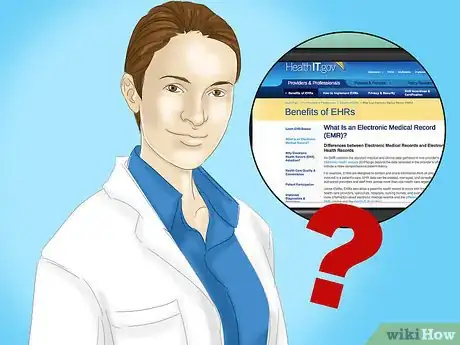
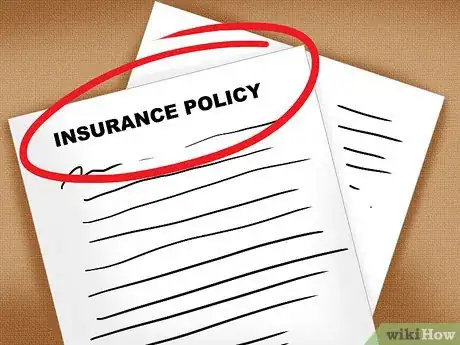
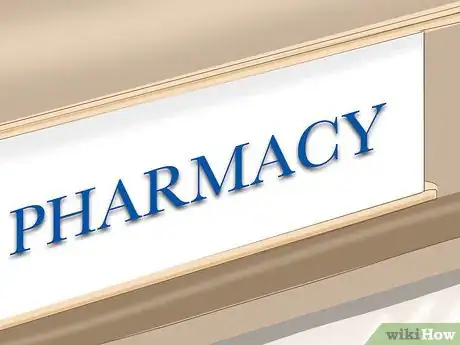

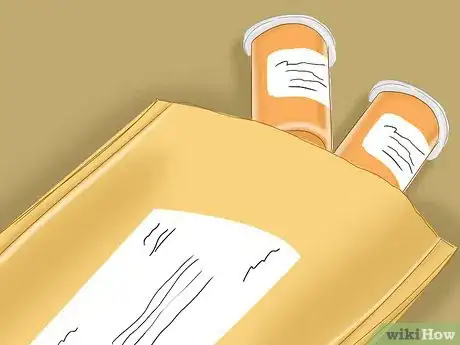
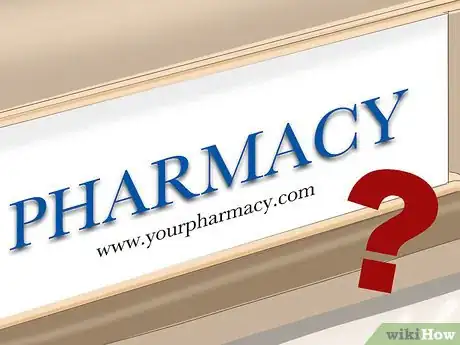
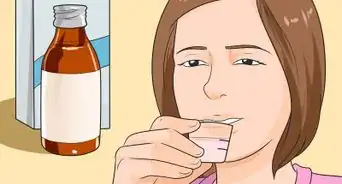

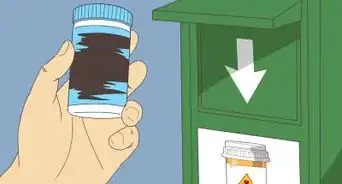
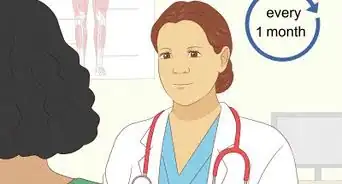
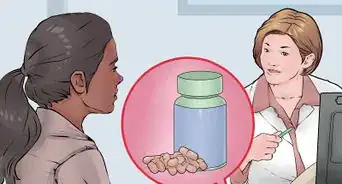
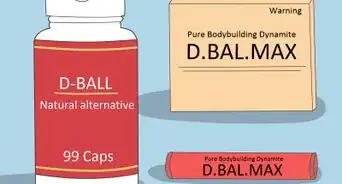

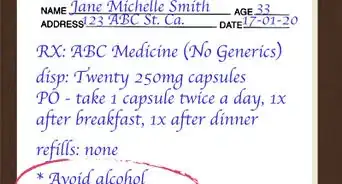
-Step-17-Version-3.webp)


-Step-23.webp)
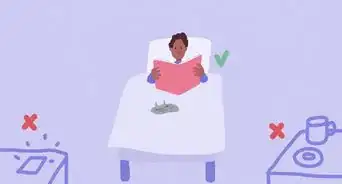
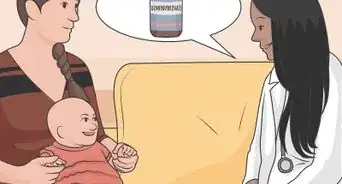







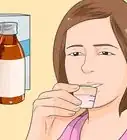

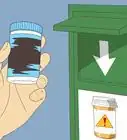
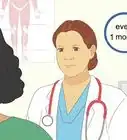



































Medical Disclaimer
The content of this article is not intended to be a substitute for professional medical advice, examination, diagnosis, or treatment. You should always contact your doctor or other qualified healthcare professional before starting, changing, or stopping any kind of health treatment.
Read More...